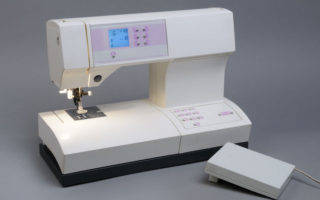Apple on Wednesday announced the death of its visionary co-founder Steve Jobs.
The Silicon Valley icon who gave the world the iPod and the iPhone resigned as CEO of the world’s largest technology corporation in August, handing the reins to current chief executive Tim Cook.
Steven Paul Jobs was born Feb. 24, 1955, to Joanne Simpson, then an unmarried graduate student, and Abdulfattah Jandali, a student from Syria. Simpson gave Jobs up for adoption, though she married Jandali and a few years later had a second child with him, Mona Simpson, who became a novelist.
Steven was adopted by Clara and Paul Jobs of Los Altos, Calif., a working-class couple who nurtured his early interest in electronics. He saw his first computer terminal at NASA’s Ames Research Center when he was around 11 and landed a summer job at Hewlett-Packard before he had finished high school.
Jobs enrolled in Reed College in Portland, Ore., in 1972 but dropped out after a semester.
“All of my working-class parents’ savings were being spent on my college tuition. After six months, I couldn’t see the value in it,” he said at a Stanford University commencement address in 2005. “I had no idea what I wanted to do with my life and no idea how college was going to help me figure it out.”
When he returned to California in 1974, Jobs worked for video game maker Atari and attended meetings of the Homebrew Computer Club with Steve Wozniak, a high school friend who was a few years older.
Wozniak’s homemade computer drew attention from other enthusiasts, but Jobs saw its potential far beyond the geeky hobbyists of the time. The pair started Apple in Jobs’ parents’ garage in 1976. Their first creation was the Apple I – essentially, the guts of a computer without a case, keyboard or monitor.
The Apple II, which hit the market in 1977, was their first machine for the masses. It became so popular that Jobs was worth $100 million by age 25. Time magazine put him on its cover for the first time in 1982.
During a 1979 visit to the Xerox Palo Alto Research Center, Jobs again spotted mass potential in a niche invention: a computer that allowed people to access files and control programs with the click of a mouse, not typed commands. He returned to Apple and ordered the team to copy what he had seen.
It foreshadowed a propensity to take other people’s concepts, improve on them and spin them into wildly successful products. Under Jobs, Apple didn’t invent computers, digital music players or smartphones – it reinvented them for people who didn’t want to learn computer programming or negotiate the technical hassles of keeping their gadgets working.
“We have always been shameless about stealing great ideas,” Jobs said in an interview for the 1996 PBS series “Triumph of the Nerds.”
Jobs had battled cancer in 2004 and underwent a liver transplant in 2009 after taking a leave of absence for unspecified health problems. He took another leave of absence in January, his third since his health problems began, before resigning as CEO six weeks ago. Jobs became Apple’s chairman and handed the CEO job over to his hand-picked successor, Tim Cook.
The news Apple fans and shareholders had been dreading came the day after Apple unveiled its latest version of the iPhone, just one in a procession of devices that shaped technology and society while Jobs was running the company.




